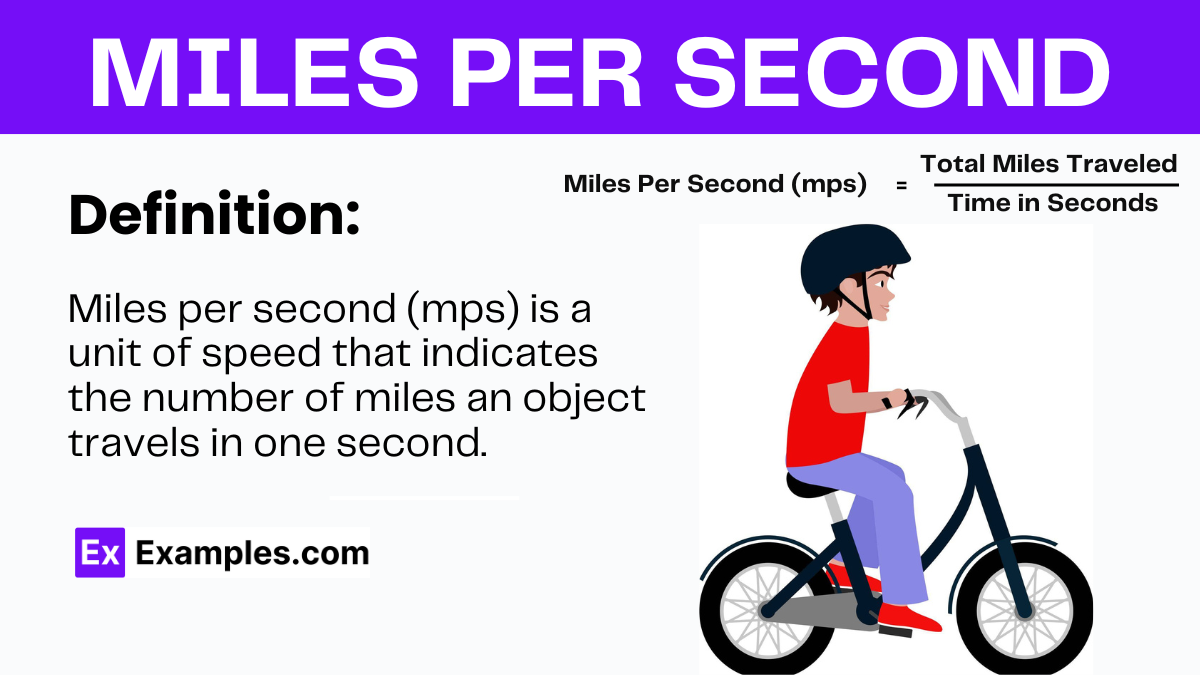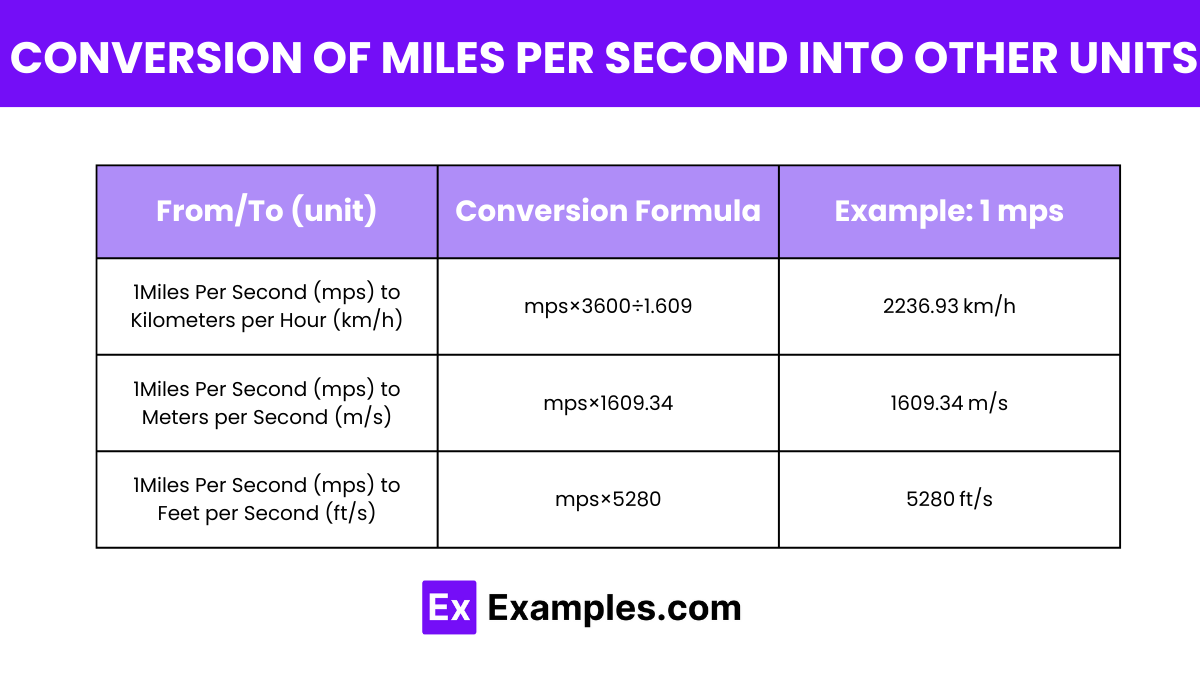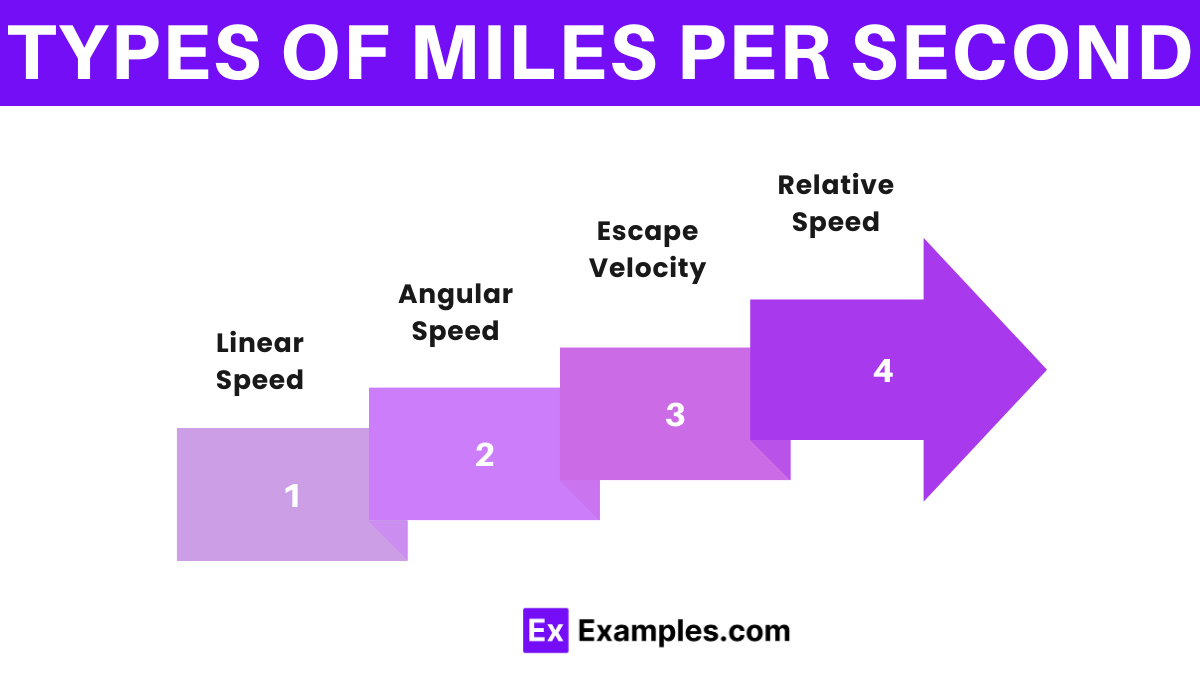What is the primary use of miles per second (mps) as a unit?
Measuring fuel consumption
Measuring speed of fast-moving objects
Measuring volume
Measuring temperature


The symbol for miles per second is typically written as mps or mi/s, indicating the number of miles traveled per second.

| From/To (unit) | Conversion Formula | Example: 1 mps |
|---|---|---|
| 1Miles Per Second (mps) to Kilometers per Hour (km/h) | mps×3600÷1.609 | 2236.93 km/h |
| 1Miles Per Second (mps) to Meters per Second (m/s) | mps×1609.34 | 1609.34 m/s |
| 1Miles Per Second (mps) to Feet per Second (ft/s) | mps×5280 | 5280 ft/s |
1 mile per second (mps) is equivalent to approximately 2236.93 kilometers per hour (km/h). This conversion rate illustrates the rapid speed at which distance is covered in kilometers compared to miles.
One mile per second (mps) is equal to approximately 1609.34 meters per second (m/s). This conversion factor allows for precise measurement and comparison of speed in both units.
One mile per second (mps) is equivalent to 5280 feet per second (ft/s). This conversion factor is commonly used in physics and engineering calculations involving velocity and distance measurements.

The speed of light in a vacuum is approximately 186,282 miles per second. This remarkable speed serves as a fundamental constant in physics and plays a crucial role in understanding the nature of space, time, and the universe.
Miles per second” is a unit of speed or velocity. It represents the distance traveled in miles in one second. This unit is commonly used in physics, astronomy, and engineering to describe fast-moving objects or phenomena.
Mach number represents the speed of an object relative to the speed of sound in the surrounding medium. Converting miles per second to Mach involves determining how many times faster than the speed of sound the object is traveling.
“Miles per second” measures the speed or velocity at which an object travels in a given amount of time, specifically in terms of miles covered per second.
Text prompt
Add Tone
10 Examples of Public speaking
20 Examples of Gas lighting
What is the primary use of miles per second (mps) as a unit?
Measuring fuel consumption
Measuring speed of fast-moving objects
Measuring volume
Measuring temperature
If an object travels at 2 miles per second, how many miles does it cover in 10 seconds?
5 miles
10 miles
20 miles
30 miles
Which speed is greater?
10 miles per hour
5 miles per second
15 kilometers per hour
30 feet per second
How is miles per second (mps) commonly converted to kilometers per second (km/s)?
Multiply by 0.621
Multiply by 1.609
Divide by 1.609
Divide by 0.621
Which of the following represents a very fast speed typically measured in miles per second?
The speed of a walking person
The speed of a car
The speed of a space shuttle
The speed of sound
What is the approximate speed of light in miles per second?
186,000 miles per second
1,000 miles per second
500 miles per second
300 miles per second
Which unit would be more appropriate for measuring the speed of an asteroid?
Miles per hour
Kilometers per hour
Miles per second
Meters per second
If a spacecraft is moving at 4 miles per second, how many miles will it travel in 1 hour?
14,400 miles
1,440 miles
400 miles
144 miles
Which phenomenon would not typically be measured in miles per second?
The speed of a satellite
The speed of sound
The speed of a car
The speed of a comet
What is 3 miles per second in miles per hour?
10,800 miles per hour
6,000 miles per hour
1,080 miles per hour
108 miles per hour
Before you leave, take our quick quiz to enhance your learning!

